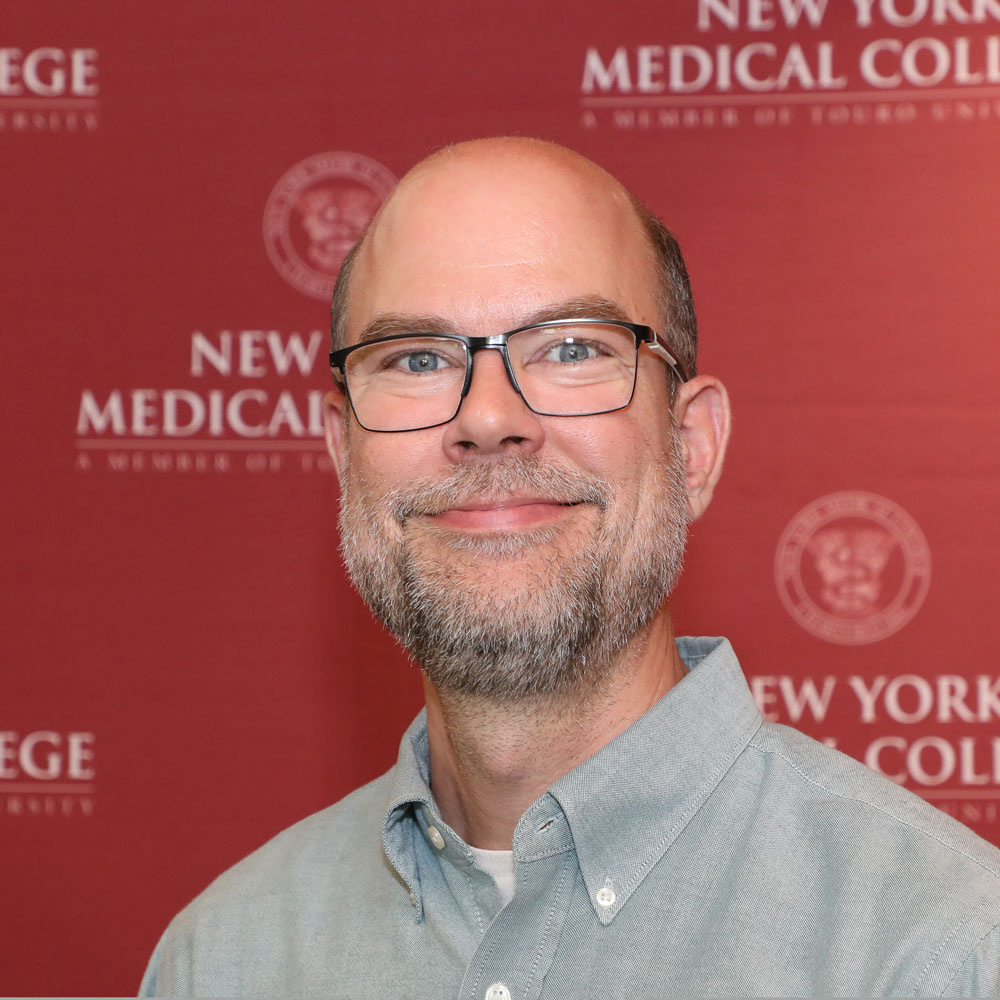
Christopher B. Whitehurst, M.S., Ph.D.

Christopher Whitehurst, Ph.D., joined the faculty of the School of Medicine and Graduate School of Biomedical Sciences in 2021, bringing a strong background in virology research, particularly Epstein-Barr Virus (EBV), the causative agent of infectious mononucleosis and is associated with multiple forms of cancer, including Hodgkin’s lymphoma, Burkitt’s lymphoma and nasopharyngeal carcinoma, as well as acquired and innate immune disorders.
Previously he was at the University of North Carolina at Chapel Hill (UNC) since 2006, first as a post-doctoral fellow and most recently as research assistant professor. He studied the vaccinia virus, which is used in the small pox vaccination under the leadership of Dr. Michael Reddy at the University of Wisconsin–Milwaukee, and the Sindbis Virus transmembrane protein structure, mentored by Dr. Dennis Brown at North Carolina State University. Dr. Whitehurst completed his post-doctoral training on the topic of EBV ubiquitination/deubiquitination processes under the mentorship of Dr. Joseph Pagano at the University of North Carolina at Chapel Hill.
Education
- B.S., Biochemistry, Clemson University
- M.S., Chemistry, University of Wisconsin–Milwaukee
- Ph.D., Biochemistry, North Carolina State University
- Postdoctoral Training, University of North Carolina at Chapel Hill
Areas of Expertise
- Ubiquitination/deubiquitination
- Herpesviruses (Epstein-Barr Virus)
Research
Epstein-Barr Virus (EBV) is a DNA human herpesvirus which causes infectious mononucleosis and B-cell lymphomas in immunocompromised individuals. EBV is also closely associated with Hodgkin’s lymphoma, Burkitt’s lymphoma, and nasopharyngeal carcinoma. There is currently no efficacious treatment for EBV, and the need for improved therapies is driven by people immunosuppressed due to AIDS, organ transplantation, cancer, and aging. Approximately 90-95 percent of the world’s population is infected with EBV, and most infections occur in childhood and are typically asymptomatic.
Dr. Whitehurst's laboratory work spans the virology of a human tumor virus and ubiquitin systems as regulators of viral and cellular protein function. Current work focuses on viral and cellular interactions and resulting downstream functional consequences of the EBV late lytic gene BPLF1. BPLF1 is a deubiquitinating enzyme (DUB) with its enzymatic activity encoded in the first 205 amino acids. Protein ubiquitination plays indispensable roles in many cellular and viral processes. Monoubiquitination modifications usually result in the regulation of functional activity of protein targets, whereas polyubiquitination may suggest that the tagged protein will be targeted for degradation depending on the type of ubiquitin linkage.
His work has implicated BPLF1 in a wide range of viral and cellular processes including infectivity, viral DNA replication, and DNA repair. He has also demonstrated that knockout of BPLF1 delays and reduces human B-cell immortalization and lymphoma formation in humanized mice. These findings attest to BPLF1’s importance in understanding the roles of herpesviral deubiquitinating activity in both lytic and persistent infections. Inhibition of EBV’s DUB activity provides a new approach to specific therapy of EBV infections.
Current research plans include:
- Examining the effects of BPLF1 on DNA repair processes
- Examining the global effects of a BPLF1 knockout virus in vitro and in vivo with a humanized mouse model
- Identifying and characterizing viral and cellular targets of BPLF1 deubiquitinating activity
- Screening compound libraries to identify inhibitors of BPLF1
Publications
Memberships and Affiliations
- American Society for Virology
- American Society for Microbiology
- Epstein-Barr Virus Association
Teaching Responsibilities
- Medical Microbiology Laboratory
- Medical Biochemistry Conferences
- Selected Virology lectures

